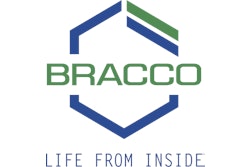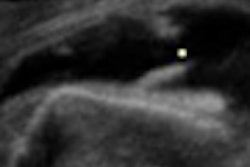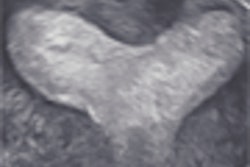ATLANTIC CITY, NJ - Oral ultrasound contrast agents can overcome interference from bowel gas and make it possible to image normal and abnormal structures in the gastrointestinal (GI) tract, according to a presentation at this week's Leading Edge in Diagnostic Ultrasound conference.
"Although we don't use oral ultrasound contrast in this country, I do think that ultrasound can be improved by adding oral contrast, not just in [the GI tract] but also in surrounding structures," said Dr. Ji-Bin Liu of Thomas Jefferson University (TJU) in Philadelphia.
X-ray with barium and endoscopy are common tests for the upper GI tract, but they can't delineate submucosal structures, according to Liu. For its part, conventional ultrasound imaging can experience shadowing artifacts in a GI tract filled with gas and may suffer from a lack of an imaging "window." It can also obscure adjacent structures, he said.
An ideal oral ultrasound contrast agent would be liquid-based and drinkable, Liu said. It should also displace and absorb bowel gas, be nontoxic, have acoustic properties close to soft tissue, and pass slowly through the GI tract. In addition, it should be easy to use and inexpensive.
In the past, water has been explored as a tool for replacing and reducing stomach gas, but this method yielded inconsistent results, he said. The echogenicity of the back wall was increased, as was the gas artifact. There was also an un-uniform distribution of gas, water, and debris.
SonoRx, an oral ultrasound contrast agent developed by Bracco Diagnostics, received U.S. Food and Drug Administration (FDA) clearance in 1998. However, it was later withdrawn by the company, Liu said.
Another oral ultrasound contrast agent, 85-GW, from Chinese firm Huqingyutang Pharmaceutical, received clearance from the State Food and Drug Administration (SFDA) in China in 1986. Thousands of patients have been scanned using 85-GW, which consists of soybean and other edible materials, Liu said.
The oral ultrasound contrast agent can be used to visualize ulceration disease, benign neoplasms, gastric polyps, gastrointestinal stromal tumors, and malignant neoplasms, according to Liu. It also helps in visualizing adjacent organs.
Liu said that in the future, real-time oral contrast imaging may be used for GI motility disorders such as esophageal achalasia, esophageal spasm, and esophageal reflux, as well as gastric motility disorders. Combined oral and vascular contrast imaging could be employed to evaluate GI tract neoplasms, nonneoplasm disorders, and vascular abnormalities, he said.
"Hopefully, real-time oral contrast with intravenous contrast may offer another potential for clinical application," he said.
By Erik L. Ridley
AuntMinnie.com staff writer
May 23, 2008
Related Reading
Ultrasound contrast boosts prostate biopsy yield, May 22, 2008
ASE welcomes echo contrast labeling change, May 22, 2008
Ultrasound contrast agents appear safe despite FDA warning, April 1, 2008
Microbubble contrast shows broad potential for US, February 12, 2008
CEUS aids in discriminating hypoechoic prostate lesions, December 6, 2007
Copyright © 2008 AuntMinnie.com




















